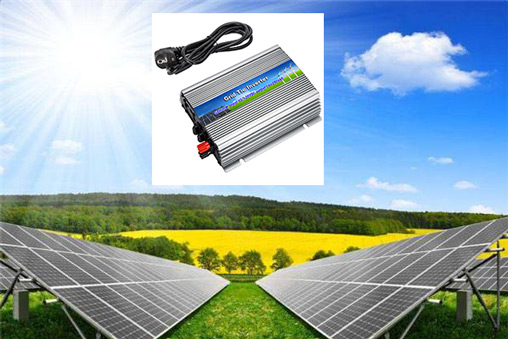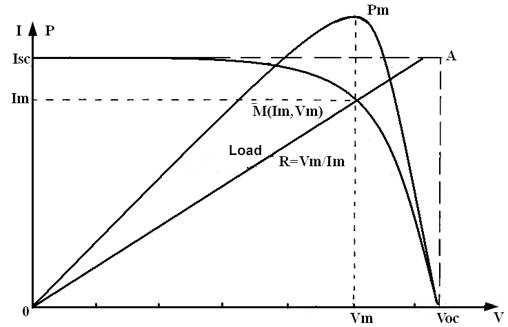The photovoltaic solar inverters are classified into grid-tie inverters, off-grid inverters, and microgrid energy storage inverters according to their different applications. The grid-tie inverters can be further classified into micro inverters, string-type inverters, concentrated inverters and centralized distributing inverters according to power and usage. The micro inverter has the power class of 180W to 1200W, thus being suitable for small power generation system. The string-type inverter is the single-phase inverter with power from 1kW to 5kW. It is suitable for household power generation system. The three-phase inverter with the grid-tie voltages of 220V, 5kW to 70kW is suitable for industrial and commercial power generation systems. Its on grid voltage is three-phase 380V.

The on grid solar inverter is a key component connecting the photovoltaic array and the grid. In addition to converting the DC power generated by the component into AC power that the grid can receive, the following special functions are also available:
1. Maximum power point tracking (MPPT) function
When the sunlight intensity and ambient temperature change, the input power of the PV module exhibits a nonlinear change. As shown in the figure, it can be seen from the figure that the PV module is neither a constant voltage source nor a constant current source, and its power varies as the output voltage changes and has nothing to do with the load. Its output current begins as a horizontal line as the voltage rises. When it reaches a certain power, it decreases as the voltage rises. When the component open circuit voltage is reached, the current drops to zero.

The output power of photovoltaic modules is affected by factors such as sunlight intensity and ambient temperature. When the sunlight intensity decreases, the open circuit voltage of the photovoltaic module decreases, the short-circuit current decreases, and the maximum output power decreases. When the temperature of the photovoltaic module decreases, the short-circuit current of the component decreases, but the open circuit voltage of the component increases, and the maximum output power increases. In the case of a certain component temperature and sunlight intensity, the same component has only a single maximum power output point. The MPPT function is the maximum power tracking function. By adjusting the DC voltage and output current, the solar module always works at the maximum operating point, and puts out the maximum power under the present temperature and sunlight condition.
The common maximum power tracking control methods include: Constant voltage tracking (CVT), which fixes the terminal voltage of the PV module to a fixed value, and has the characteristics of simple control and good stability, power calculation method, current optimization method, perturbation and observation method, increment conductivity method and other classical control algorithms, as well as the optimal gradient method, fuzzy logic control method, neuroid network control method and other modern control algorithms.
2. Inspection and control of the islanding effect
In normal power generation, the photovoltaic grid-tie power generation system is connected to the bulk power system to deliver active power to the grid. However, when the grid is in power loss, the PV on grid power generation system may continue to work and be in independent operation with the local load. This phenomenon is called the islanding effect. When the inverter has an islanding effect, it will cause great safety hazard to the personal safety, power grid operation and the solar inverter itself. Therefore, the inverter grid entry standard stipulates that the PV grid-tie solar inverter must have the inspection and control function of the islanding effect.
The inspection method of the islanding effect includes passive inspection and active inspection. The passive inspection method detects the amplitude of the voltage and current at the output of the on grid inverter. The inverter does not add an interference signal to the grid. Through inspecting if the current phase deviation, frequency and other parameters exceed the stipulated value, the grid is judged to be power off or not. This method does not cause power grid pollution, and there is no energy loss. The active inspection means that the grid-tie solar inverter actively and regularly applies some interference signals to the power grid, such as, the frequency shifting and phase shifting. Since the power grid can be regarded as an infinite voltage source, when there is a power grid, these interference signals will be absorbed by the power grid. If the power grid is out of power, these interference signals will form positive feedback, which will eventually form an excessive frequency or voltage, so as to judge whether the islanding effect has occurred.
3. Power grid inspection and grid connection function
This involves the inverter continuously monitoring the grid parameters such as voltage, frequency, and phase. It ensures that the grid is stable and within acceptable limits. If any anomalies are detected, the grif tie power inverter disconnects to prevent damage or safety hazards. When the grid parameters are within the acceptable range, the inverter synchronizes its output with the grid's voltage and frequency. It then connects and starts feeding electricity into the grid. This process includes matching the phase of the grid to avoid disturbances and ensuring seamless integration of the generated solar power. The grid on inverter constantly adjusts its output to maintain synchronization, ensuring efficient and stable power flow to the grid. These functions are essential for maintaining grid stability and ensuring the safe operation of solar power systems.
4. Zero (low) voltage traversing function
The zero (low) voltage traversing function in an on-grid inverter is a critical feature designed to ensure the stability and reliability of the electrical grid. During grid disturbances, such as faults or voltage sags, the voltage level can drop significantly. Traditionally, inverters would disconnect from the grid to protect themselves, but this can lead to further destabilization, especially if multiple inverters disconnect simultaneously.
The zero voltage traversing (ZVT) function, also known as low voltage ride-through (LVRT), enables the inverter to remain connected and continue operating during these low voltage conditions. The inverter can sustain its operation for a predefined period, even when grid voltage drops to zero. This capability is achieved through advanced control algorithms and robust hardware design, allowing the on grid tie inverter to maintain synchrony with the grid and support grid stability.
Grid tie solar inverters are indispensable components of modern solar power systems, performing a range of critical functions that go beyond simple DC to AC conversion. Inverter Shop can provide different type grid tie inverter for you. As the world continues to embrace renewable energy, the role of grid tie pv solar inverters will only become more vital, driving the future of sustainable power generation.
